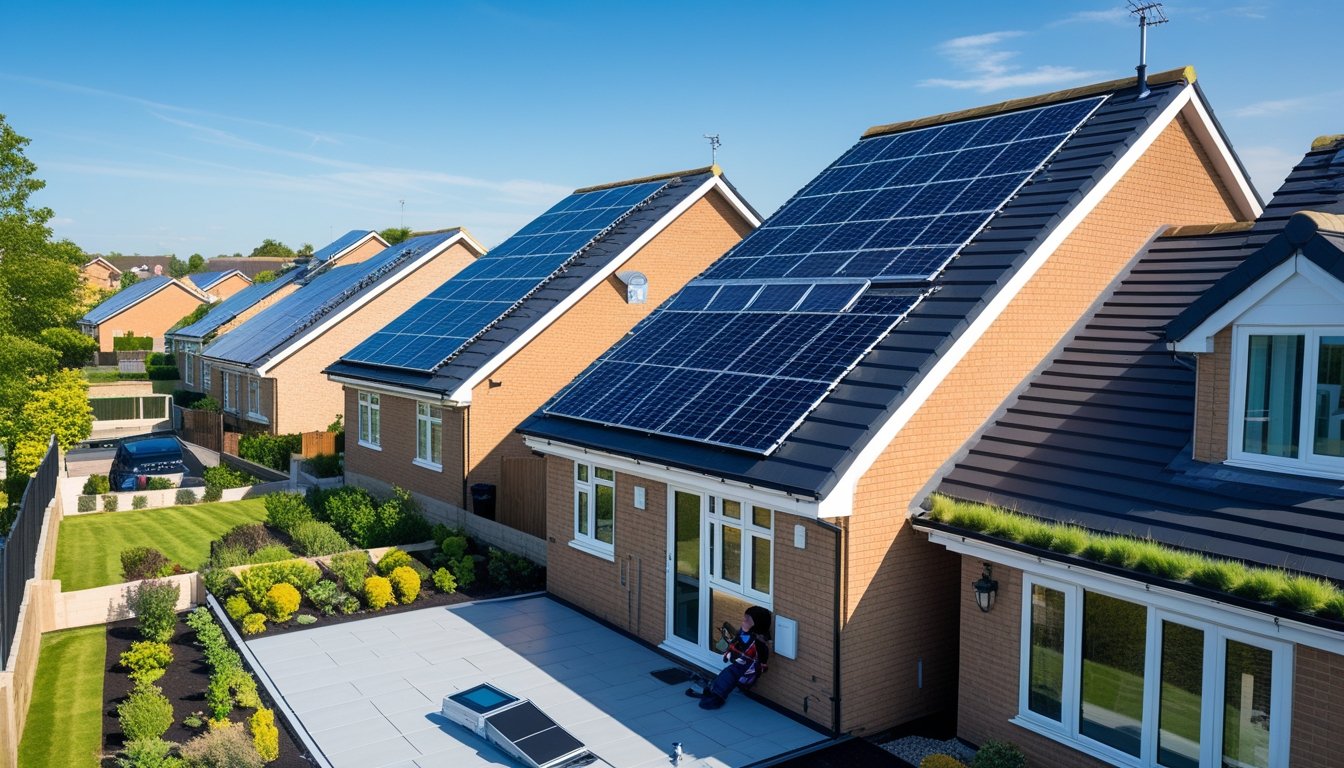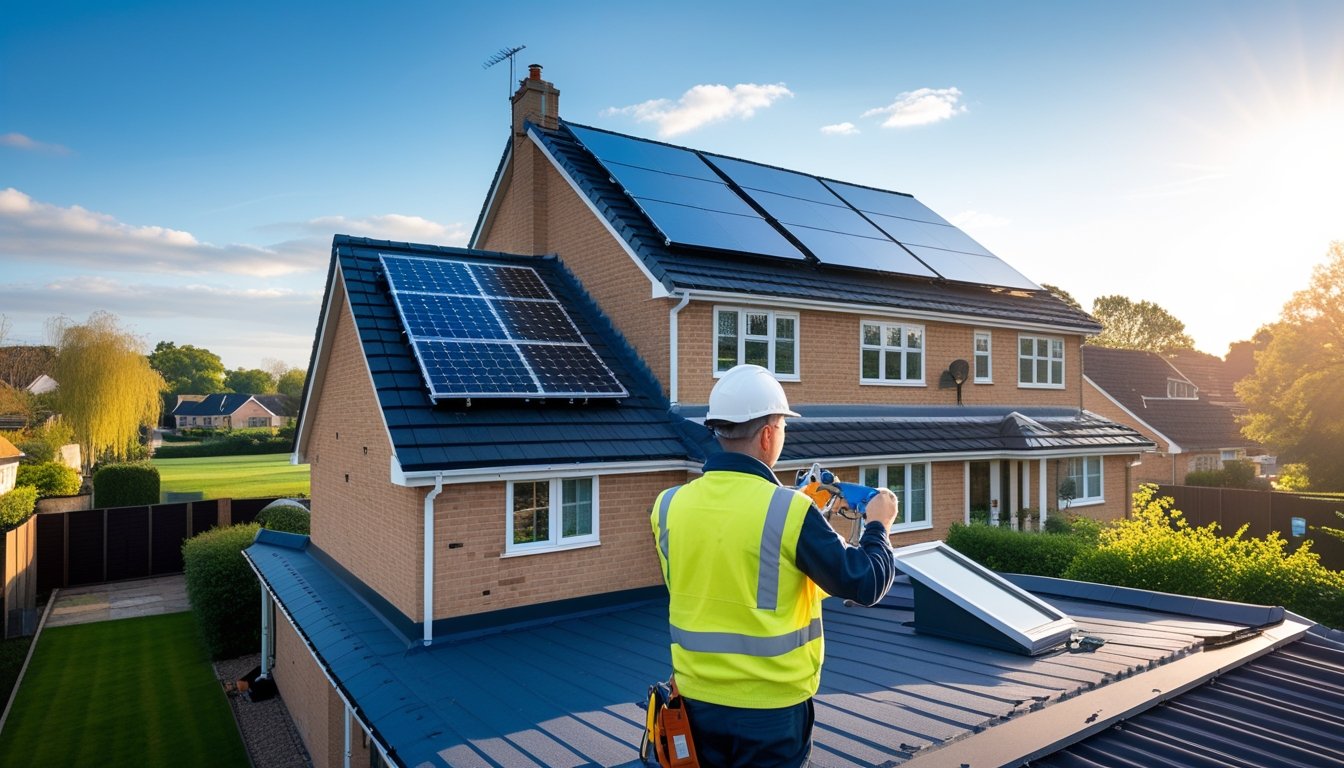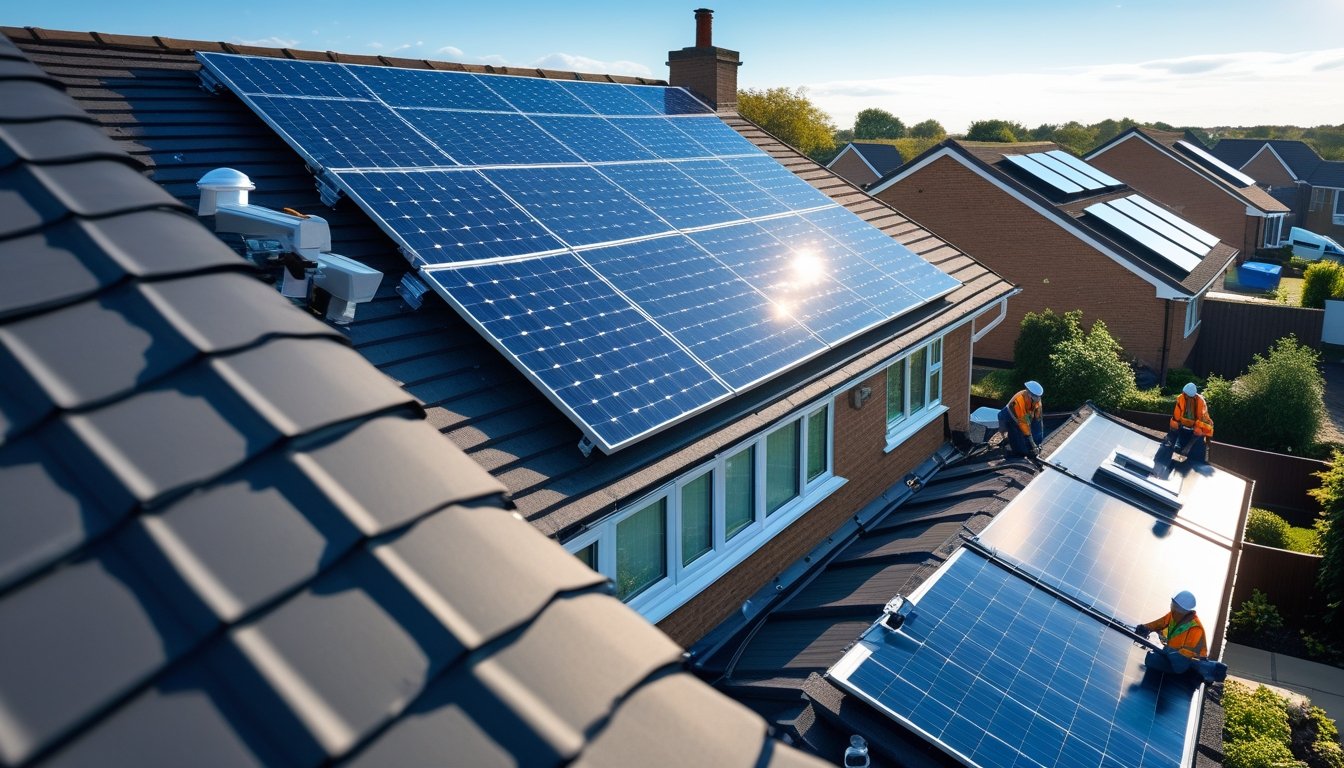Late updated: 02 Aug 2025 13:08
Written by: Oliver Bennett
Maximising Energy Efficiency With UK Roof Upgrades: Key Strategies for Homeowners
Maximising energy efficiency in UK homes is increasingly important as we face rising energy costs and the urgent need for sustainable living. By making strategic roof upgrades, we can significantly cut down on energy consumption, reduce our bills, and contribute to a greener planet. The UK's existing housing stock, often characterised by older buildings with traditional roofing, presents an opportunity for improvement.

Our homes’ roofs play a pivotal role in regulating temperature by managing heat gain in the summer and heat loss in the winter. With advancements in roofing materials and technologies, UK homeowners can explore options like enhanced insulation, cool roofing materials, and solar panel installations that make energy efficiency achievable and cost-effective. As we adopt these new solutions, we not only improve the comfort and value of our homes but also reduce our carbon footprint significantly.
Understanding the variety of roofing upgrades available today means tapping into the potential for increased sustainability and energy savings. These changes, although initially seeming complex or costly, offer invaluable returns in both economic and environmental terms. As we unpack these solutions, it becomes clear that the journey to energy-efficient living begins at the top—our roofs.
Key Takeaways
- Roof upgrades cut energy costs and increase efficiency.
- Advanced materials like cool roofing and solar panels enhance performance.
- Sustainable roofing improves house value and environment.
Core Components of Energy-Efficient UK Roof Upgrades

Achieving energy efficiency through roof upgrades involves optimising insulation, selecting appropriate materials, enhancing ventilation, and addressing potential air leaks. These elements work together to significantly reduce energy consumption and costs.
Optimising Roof Insulation for Maximum Performance
Effective roof insulation is crucial for maintaining a home's thermal performance. By installing high-quality insulation, we reduce heat transfer and enhance a roof's ability to retain warmth during winter and remain cool in summer. This optimises energy consumption and leads to significant energy savings.
Insulation upgrades can include materials like fibreglass, cellulose, or spray foam. We also need to consider the R-value, which measures thermal resistance, when selecting insulation to ensure it's suited to the UK's climate. Properly installed insulation directly impacts energy costs, making it a vital component of any energy-efficient roofing strategy.
Selecting Energy-Efficient Roofing Materials
Choosing the right roofing materials impacts a building's energy efficiency. Options like metal roofing and asphalt shingles with reflective granules are popular due to their durability and ability to reflect solar heat. Reflective roofing materials help reduce cooling loads in warm weather, ultimately lowering utility costs and enhancing indoor comfort.
For flat roofs, energy-efficient roofing systems can include membrane materials that offer excellent thermal performance. Our selections should always consider local climate conditions, environmental impact, and budget constraints to maximise both cost savings and structural longevity.
Enhancing Ventilation and Airflow
Proper ventilation plays a vital role in maintaining the overall energy efficiency of a roof. By ensuring efficient airflow, we prevent heat buildup and moisture retention, which can damage insulation and roofing materials. Considerations for enhancing ventilation include the strategic use of soffit vents, ridge vents, and attic fans.
Each component works to improve attic ventilation, mitigating common problems like condensation and excess heat. This ensures optimal working conditions for the insulation and reduces the risk of costly repairs. Effective ventilation systems thus contribute significantly to the energy efficiency of a home.
Addressing Air Leaks and Weatherproofing
Air leaks can lead to significant energy losses, as they allow conditioned air to escape and unconditioned air to enter. To combat this, we focus on sealing gaps and ensuring thorough weatherproofing, which enhances a roof's overall energy performance.
Weatherproofing involves applying seals and barriers to prevent air and moisture infiltration. By addressing these issues, we not only improve energy efficiency but also protect the structure from potential damage due to water intrusion. In turn, this proactive approach leads to substantial energy savings and prolonged roof longevity.
Innovative Roofing Solutions and Environmental Benefits
Innovative roofing solutions offer significant environmental benefits, including improved energy efficiency and reduced carbon emissions. By choosing materials like cool roofs, green roofs, and reflective coatings, we can create sustainable spaces that positively impact our environment.
Implementing Cool Roofs and Reflective Coatings
Cool roofs are designed to reflect more sunlight and absorb less heat compared to standard roofs. The use of reflective coatings and materials enhances solar reflectance, reducing the need for air conditioning and lowering energy costs. This not only offers economic savings but also contributes to mitigating the urban heat island effect, which is prevalent in densely built environments.
Reflective shingles and specialised roof coatings are key components in these solutions. By reflecting solar rays, they help maintain cooler building temperatures. In urban settings, implementing cool roofing can minimise the heat built up, leading to cooler urban atmospheres and promoting a more balanced ecosystem. Increasing the adoption of these technologies in our buildings can yield considerable environmental advantages by lessening the demand for artificial cooling systems.
Adopting Green Roofs in Urban Settings
Green roofs, or vegetative roofs, involve the growing of plants over a waterproof membrane. These systems offer significant benefits in urban settings, such as reducing the urban heat island effect by transforming the built environment into a terrestrial ecosystem. This not only cools the air but also improves air quality.
Green roofs present unique stormwater management advantages, absorbing rainwater and reducing runoff. This aids in controlling urban flooding and lessens the burden on drainage systems. Alongside ecological benefits, these roofs improve building insulation, providing energy savings throughout the year. With the added bonus of aesthetic enhancements, green roofs are increasingly becoming a preferable choice for sustainable urban development.
Reducing Environmental Impact and Carbon Emissions
One of the central goals of innovative roofing solutions is reducing the environmental impact. By effectively managing energy consumption, these systems contribute to a lower carbon footprint. Technologies like cool roofs and green roofs play pivotal roles in reducing carbon emissions.
Roofing innovations can integrate with renewable energy sources, like solar panels, to enhance energy efficiency. This integration not only curtails reliance on non-renewable energy sources but also promotes sustainable energy practices. By reducing energy demands and improving efficiency, these roofing solutions empower us to take sustainable strides towards a healthier planet, demonstrating tangible progress in our environmental responsibility.
Frequently Asked Questions

Exploring the optimisation of energy efficiency through roof upgrades in the UK requires careful consideration of various factors. Key areas of focus include insulation materials, the role of solar panels, roofing options, ventilation impact, and available financial incentives.
What are the most effective insulation materials for enhancing the energy efficiency of a roof in the UK?
In the UK, effective insulation is crucial for energy conservation. Materials like mineral wool, fibreglass, and rigid foam boards are popular due to their superior thermal resistance. These options help maintain indoor temperatures, reducing the need for additional heating.
How does upgrading the roof contribute to overall home energy savings?
Roof upgrades, such as improved insulation and energy-efficient materials, can significantly lower energy consumption. By reducing heat loss in winter and minimising heat gain in summer, these upgrades contribute to a more stable indoor environment, leading to reduced heating and cooling expenses.
Can installing solar panels on the roof improve a property’s energy efficiency?
Yes, solar panels convert sunlight into electricity, decreasing dependence on traditional energy sources. By generating renewable energy, homeowners can lower their electricity bills and even sell surplus energy back to the grid. This improvement boosts a property's overall energy efficiency and sustainability.
What roofing options are available for improving thermal performance in UK homes?
UK homeowners can choose from diverse roofing options to enhance thermal performance. Metal roofs, tile roofs, and green roofs are notable for their energy efficiency. Each of these materials offers unique thermal properties, aiming to enhance indoor comfort and energy savings.
To what extent does roof ventilation affect energy conservation in residential buildings?
Adequate roof ventilation is essential for preventing moisture build-up and maintaining a balanced temperature within the attic space. Proper ventilation reduces the strain on heating and cooling systems, thereby enhancing the building's energy efficiency. It also helps to prolong the life of the roof structure.
What financial incentives or grants are accessible for homeowners looking to improve roof energy efficiency?
Homeowners in the UK have access to various financial incentives and grants designed to encourage energy efficiency improvements. Programmes like the Green Homes Grant help offset the costs of energy-saving upgrades, making it more affordable for property owners to enhance their homes' energy profile.
